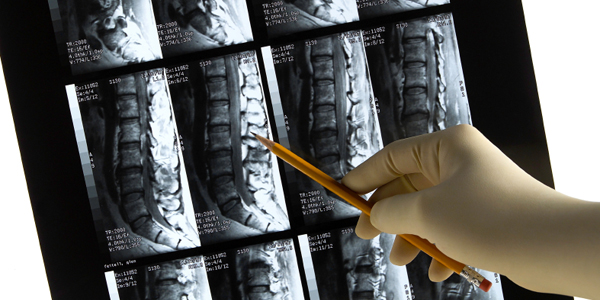Dr. Rowshan has specialized training in the nonsurgical and surgical treatment of scoliosis and the young spine.
Scoliosis is abnormal curve and rotation of the spine acquired during adult years (Degenerative Scoliosis) or in children and young adults (Congenital or Idiopathic Scoliosis). On x-rays, ones spine resembles a “C” or “S” shape rather than a straight line.
It is reported that over 6 million children are diagnosed with scoliosis in the US, majority of which are girls. Scoliosis can affect a patient’s lifestyle, physical appearance, and self-esteem. In some more serious cases, scoliosis can cause significant pain. However, a portion of patients are misdiagnosed.
Who Has Scoliosis?
Diagnosis of scoliosis is best done by a specialized physician. Both physical examination and x-rays make the diagnosis. Your physician will evaluate the curvature of the spine, shoulder blade asymmetry, waist or pelvic asymmetry, trunk position, and posture. X-rays must be obtained to determine if a curve exists and to what severity.
Treatment Options.
The primary goals of scoliosis treatment are to halt the progression of the curve, improve aesthetic appearance and improve quality of life. This is done with the use of frequent observations, braces and/or surgery. Majority of patients are treated conservatively.
There are strict guidelines as to the treatment of scoliosis, depending on the extent of deformity and curve, growth of the child and cosmetic appearance. However, some patients do not fall into a well-defined “group” in which the strict guidelines can help manage. In such patients, treatment is based on their condition, age, curve, and appearance.
Mild curves or kyphosis can be treated conservatively with focused exercises and habits. Bracing works well for some individuals with moderate or progressively worsening curves. However, new research shows that for some bracing may not only be ineffective, but also detrimental and can negatively impact every-day life (1). Severe curves can be treated with modern surgery (2).
Patients who don’t fall into a specific “group,” or are in-between conservative treatment versus surgery, new advances do exist. There are new genetic testing that can help predict curve progression. This can be a factor in deciding between surgery or brace or nothing at all.
Bracing is not a harmless treatment option. Recent studies have shown patients that were braced before surgery had more pain, lower activity levels, and lower satisfaction at 2-years post-operatively (3). Therefore, braces should be given to patients after serious consideration.
Many treatment options exist for children with scoliosis and every patient is slightly different. Please see a specialized physician that can provide you with information of the appropriate treatment(s) for you or your child.
REFERENCES
(1) T Kotwicki, MD; E Kinel, MD; W Stryla, MD; and A Szulc MD. Estimation of the stress related to conservative scoliosis therapy: an analysis based on BBSQ questionnaires. Scoliosis 2:1, 2007.
(2) E Logue, MD and J Sarwark, MD. Idiopathic Scoliosis: New Instrumentation for Surgical Management. Journal of the Academy of Orthopaedic Surgery. 17:572-581, Sept 2009.
(3) M Diab, MD, M Sharkey, MD; J Emans, MD; L Lenke, MD; T Oswald, MD; D Sucato, MD; and the Spinal Deformity Study Group. Preoperative Bracing Affects Postoperative Outcome of Posterior Spine Fusion With Instrumentation for Adolescent Idiopathic Scoliosis. Spine. 35(20):1876-9 Sept 2010.

